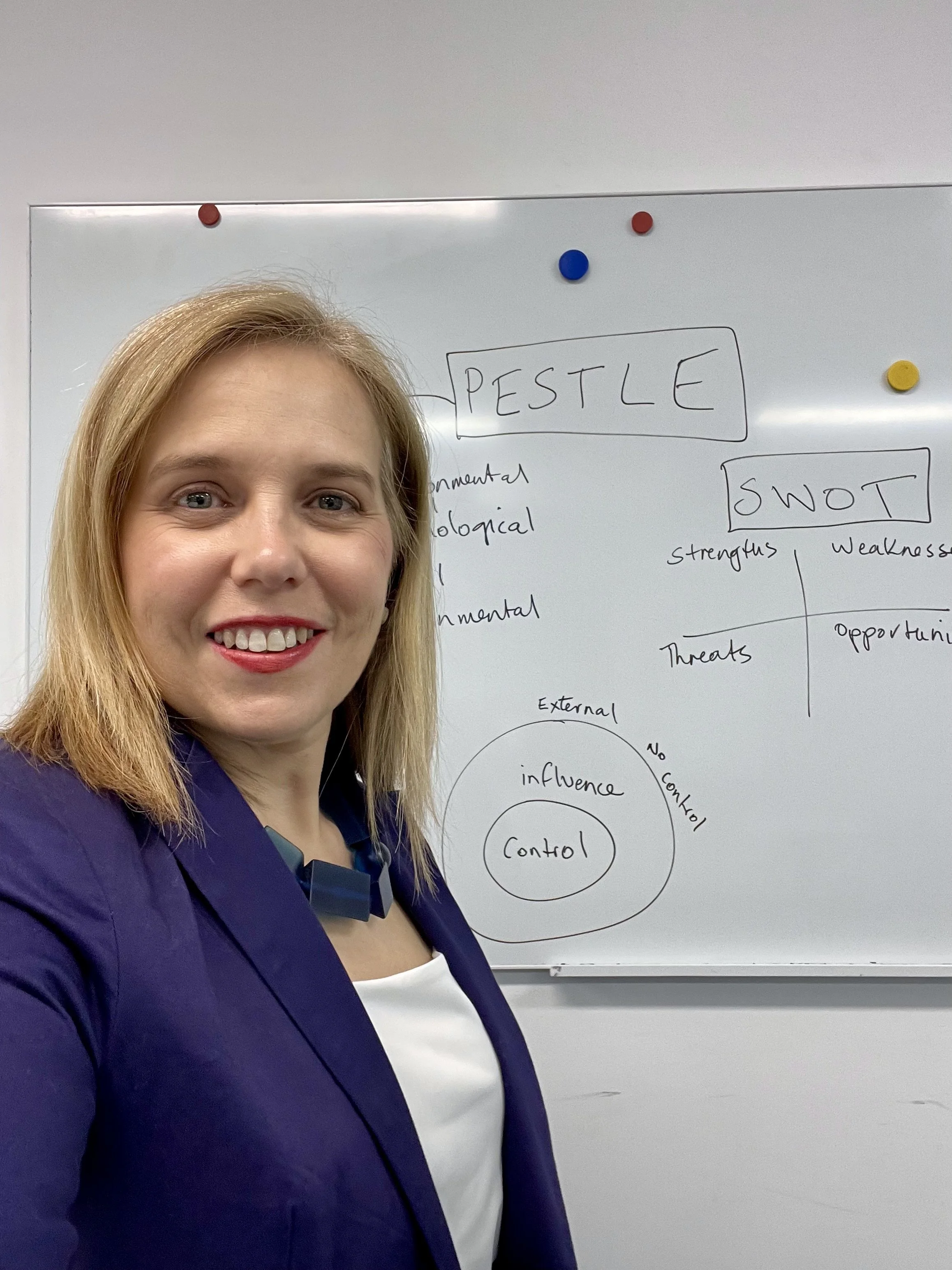Three Simple Ways to Build Foresight Into Everyday Leadership
Small habits that sharpen your ability to anticipate, adapt and lead with greater confidence
By Suzie Thoraval
“Tomorrow belongs to those who can hear it coming.”
When I was a young lawyer, one concept became deeply rooted in how I thought: foreseeability.
Foresight in law is proactive and preventative. Could someone have reasonably anticipated the consequences of their actions? If yes, then the law said they had a duty to act with care. This principle weaves through everything — from negligence (where foreseeable harm must be proven), to contracts (where only foreseeable damages count), to criminal law (where intent often hinges on whether outcomes were predictable).
As a risk leader, foresight was key: the ability to anticipate what's ahead, what could go wrong, assess likely consequences, and make informed decisions today that protect tomorrow.
Foresight isn't guesswork. It's an active discipline. And in times of volatility and uncertainty, it’s essential for what I call adaptive stability — the ability to remain grounded while adjusting to shifting conditions.
Yet in leadership, we don’t always value foresight enough. In the rush of the urgent, it’s easy to forget that what seems low-probability today may be the very thing that destabilises us tomorrow.
Why foresight strengthens risk-aligned leadership
Risk-aligned leadership is built on foresight. Not crystal-ball predictions — but intentional questioning:
What could this set in motion?
What signals are emerging?
Are we prepared to act, not just react?
Strong leaders create space to observe beyond the urgent. They monitor shifts in regulation, behaviour, sentiment, and strategy. They prepare in advance, not because they expect the worst, but because they value stability and trust.
When foresight is missing, risk creeps in through the cracks. Strategies drift. Alignment weakens. Momentum stalls. What could have been anticipated turns into a fire to put out.
Foresight is protective. It gives us space to breathe, plan, and act before pressure turns into crisis.
Sometimes you need to climb a tree
Leading in complexity is a lot like hiking through dense bushland. You’re on rough ground — adjusting to changes, managing the immediate - the rock you trip over, the branch in your face..
With foresight, you begin to read the terrain: you notice the change in slope, the rustle in the trees ahead. Even better, you climb the tree.
That higher vantage point offers clarity. It lets you see if you're veering off path, see the signs of water nearby, spot risk forming over the next ridge, and recalibrate with intention. You don’t control the forest, you move through it with greater stability, awareness, and calm. Foresight doesn’t remove the unknown — it steadies us inside it.
This is what I call adaptive stability: staying centred in motion, grounded while responsive. The ability to lead from the now while thinking ahead.
The cost of not seeing what’s coming: a leadership cautionary tale
Enron’s collapse wasn’t about lack of intelligence — it was a failure of foresight and ethics.
At its height, Enron was lauded as bold and innovative. But leaders were building on illusion: hiding losses, inflating value, and ignoring every signal that things were off course. The CFO and CEO pursued short-term wins, sidelining long-term accountability.
The damage was colossal — criminal convictions, shattered careers, billions lost, and trust deeply eroded. The tragedy? The risks weren’t hidden. They were simply ignored.
This is what happens when prestige outpaces principle, and when nobody climbs the tree to check the view ahead.
Foresight as a foundation of adaptive stability
Adaptive stability requires leaders to hold two things at once: clarity about the present and informed curiosity about what’s coming.
Michael Watkins’ work on the six disciplines of strategic thinking offers a helpful frame. He names “future-back thinking” and “the ability to anticipate and interpret change” as essential disciplines. This means tuning into early signals — weak trends, shifts in regulation, emerging technologies - and asking, “What might this mean for us?”
To stay adaptive and stable, leaders must:
Scan the environment for weak signals, not just loud ones.
Scenario plan for different futures, not just the likely one.
Encourage strategic dialogue across levels of the organisation — foresight is a team sport.
Learn continuously — because trends don’t announce themselves neatly.
Foresight is also critical to innovation. It helps us see the gaps between current state and future need — and begin to build the bridge.
Cultivating the capacity to see ahead
Here are some practical ways to strengthen your foresight muscles:
1. Regular ‘what if’ conversations - Don’t wait for pressure to ask tough questions. Proactively explore shifts on the horizon: – What trend or decision could catch us off guard? – How prepared are we if it hits this year?
These questions are hard to tackle but build confidence knowing you have thought about what’s ahead.
2. Seek unfamiliar perspectives - Look beyond your usual circles. New ideas and early warning signs often show up in unexpected places — different industries, age groups, or communities. Invite your team to stay curious and keep listening to a wide range of voices.
3. Use scenario planning to stress-test strategy - Model different futures. Not to guess the “right” one, but to prepare for more than one. – What assumptions do we rely on? – How would we adapt if those assumptions no longer held?
Scenarios create flexible playbooks — and that flexibility breeds calm.
Foresight fuels sustainable, confident leadership
Foresight isn’t a “nice to have.” It’s the anchor of strong strategy, sound risk judgment, and ethical decision-making. It helps us protect what matters — people, trust, resources, purpose — and act with greater clarity, even when the path forward is unclear.
Because when we climb above the noise, we lead with calm assurance — not from fear, but from a deep, prepared centre.
Where do you need to pause and gain altitude in your leadership right now? What patterns, however faint, are asking for your attention?
The view from the tree might just change the way you lead on the ground.

